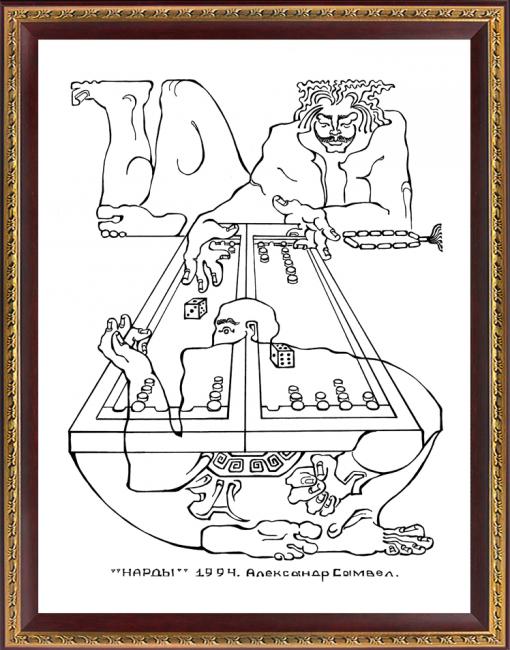Death plays backgammon.
We are like draughts in that game.
The board is the world,
And the two cards are day and night.
Avicenna
(Abu Ali ibn Sina)
Backgammon is an ancient oriental game, which is more than 5000 years old. This is a game, where chance determines the victory. The players throw two dices with dots indicating numbers on each side. The moves of the counters, made of ivory, were made according to the numbers, which the thrown dices, made of either ceramics or ivory, showed. The necessary skills for this game were the skills of choosing tactics and strategy right. An analogue of this game was found in the tomb of pharaoh Tutankhamen (15th century B.C.).
The board itself was personifying the sky, the draughts moving in a circle were symbolizing the movement of stars, which was attracting, mesmerizing, but which was dependent on the strict laws of logics. Each half of the board consists of twelve marks for the draughts, which stands for twelve months. The division of the board into four parts symbolizes the four seasons; 24 points were supposed to personify 24 hours in the day. There are thirty draughts all in all, as many as there are days in an average month. The aim of the game is to lead your draughts around the board, collect them in your house and remove them from the board before your opponent.
In poetry backgammon is a symbol of fate, accident and uncertainty.
In the graphic composition “Backgammon” two friends are gripped by this fascinating ancient game.
A game of backgammon gives peace, teaches patience and develops thinking, distracts from momentary problems and introduces one to the wisdom of millenniums.
